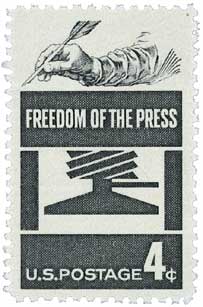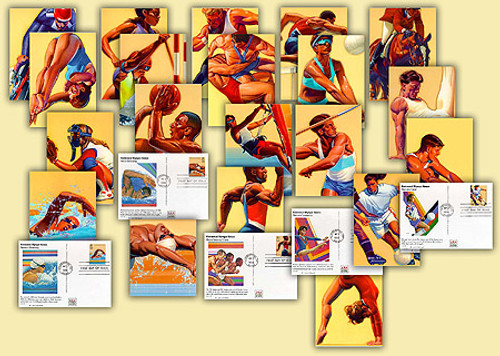
# UX221-40 FDC - 1995 20c Comic Strip First Day Postal Cards, Set of 20
On February 17, 1895, The Yellow Kid comic strip was first printed in the New York World. It was one of the first consistent Sunday comic strips, influenced the style of future comics, and was the namesake of “yellow journalism!” Although comic panels and caricatures had appeared earlier in Britain and elsewhere, it is American Richard Felton Outcault who is regarded as the “Founding Father of the Comic Strip.” His strip Hogan’s Alley, which made its debut on February 17, 1895 in the New York World, is generally considered to be the first American comic strip. Originally begun as a two-inch single panel comic, it was first printed in color on May 5, 1895, and within a year became a full-page Sunday color cartoon. Outcault’s comic depicted New York slums in all their squalor. The comic featured a group of poor, mischievous tenement children living in fictitious Hogan’s Alley, New York City. The Yellow Kid was just one of the characters in the early cartoons. He wore a much-too-large hand-me-down nightshirt, printed with a comment like, “De ladies all are a peech, see?” His ears were too big, and his head was shaved – a sign of a recent battle with lice – typical at that time. People began referring to the comic as ‘The Yellow Kid,’ and it became so successful the Kid had his own magazine, a stage show, and hundreds of toys and products. The success of the strip also brought Outcault wealth and fame. According to Mort Walker, the creator of the comics Beetle Bailey and Hi and Lois, The Yellow Kid began as a social commentary about New York. It showed the conditions the Irish faced when they came to America to escape the famine in their country. Signs saying, “No Irish need apply” excluded many from finding jobs. Without financial support, many Irish were forced to build makeshift shelters in alleys that were both eyesores and breeding grounds for crime and disease. The comic was so successful that it actually increased sales of the World, prompting William Randolph Hearst, publisher of the New York Journal, to lure Outcault to his newspaper. After Outcault left, the World continued to feature The Yellow Kid, drawn by George B. Luks. At the Journal, Outcault created a new neighborhood, McFaddens’s Flat, where he continued to feature the Yellow Kid. The two papers were soon known as the “Yellow Kid Papers,” in time shortened to the “Yellow Papers.” Later, the term developed into “Yellow Journalism” as the two newspapers competed for readers and printed fantastic, not always true, stories. By early 1898, the rivalry between the two papers died down and Outcault may have lost interest in his cartoon. It was last published on January 23, 1898. Click here to view some of The Yellow Kid comics.The Yellow Kid – Ground-breaking Comic Strip






On February 17, 1895, The Yellow Kid comic strip was first printed in the New York World. It was one of the first consistent Sunday comic strips, influenced the style of future comics, and was the namesake of “yellow journalism!” Although comic panels and caricatures had appeared earlier in Britain and elsewhere, it is American Richard Felton Outcault who is regarded as the “Founding Father of the Comic Strip.” His strip Hogan’s Alley, which made its debut on February 17, 1895 in the New York World, is generally considered to be the first American comic strip. Originally begun as a two-inch single panel comic, it was first printed in color on May 5, 1895, and within a year became a full-page Sunday color cartoon. Outcault’s comic depicted New York slums in all their squalor. The comic featured a group of poor, mischievous tenement children living in fictitious Hogan’s Alley, New York City. The Yellow Kid was just one of the characters in the early cartoons. He wore a much-too-large hand-me-down nightshirt, printed with a comment like, “De ladies all are a peech, see?” His ears were too big, and his head was shaved – a sign of a recent battle with lice – typical at that time. People began referring to the comic as ‘The Yellow Kid,’ and it became so successful the Kid had his own magazine, a stage show, and hundreds of toys and products. The success of the strip also brought Outcault wealth and fame. According to Mort Walker, the creator of the comics Beetle Bailey and Hi and Lois, The Yellow Kid began as a social commentary about New York. It showed the conditions the Irish faced when they came to America to escape the famine in their country. Signs saying, “No Irish need apply” excluded many from finding jobs. Without financial support, many Irish were forced to build makeshift shelters in alleys that were both eyesores and breeding grounds for crime and disease. The comic was so successful that it actually increased sales of the World, prompting William Randolph Hearst, publisher of the New York Journal, to lure Outcault to his newspaper. After Outcault left, the World continued to feature The Yellow Kid, drawn by George B. Luks. At the Journal, Outcault created a new neighborhood, McFaddens’s Flat, where he continued to feature the Yellow Kid. The two papers were soon known as the “Yellow Kid Papers,” in time shortened to the “Yellow Papers.” Later, the term developed into “Yellow Journalism” as the two newspapers competed for readers and printed fantastic, not always true, stories. By early 1898, the rivalry between the two papers died down and Outcault may have lost interest in his cartoon. It was last published on January 23, 1898. Click here to view some of The Yellow Kid comics.The Yellow Kid – Ground-breaking Comic Strip


















